#nosferatu behind the scenes
Explore tagged Tumblr posts
Text
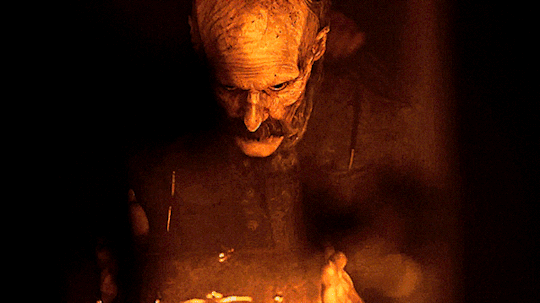
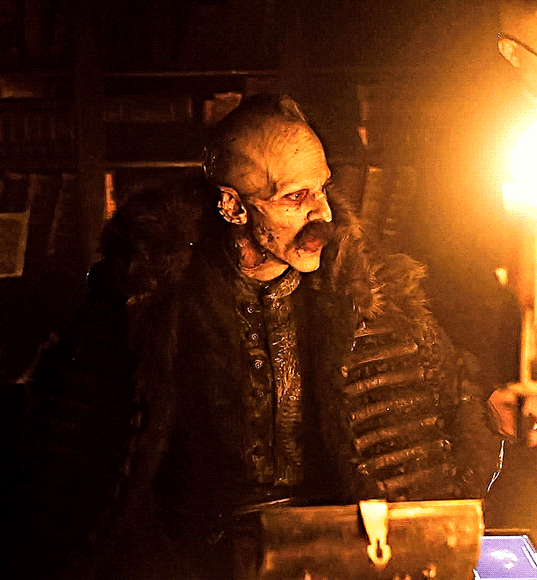




Nosferatu (2024)
#bill skarsgård#bill skarsgard#nosferatu 2024#nosferatu#count orlok#nosferatu bts#nosferatu 2024 bts#nosferatu behind the scenes#nosferatu 2024 behind the scenes#moviegifs#filmedit
440 notes
·
View notes
Text


Winona Ryder on the set of Bram Stoker's Dracula
#dracula#winona ryder#bram stoker's dracula#francis ford coppola#behind the scenes#period drama#vintage photo#nosferatu#black and white#vintage#dracula 1992#vampires movie#mina#vampire movies
3K notes
·
View notes
Text
Isabelle Adjani and Werner Herzog behind the scenes of Nosferatu: Phantom der Nacht (1979)
313 notes
·
View notes
Text
Nosferatu | A Modern Masterpeice – Becoming Count Orlok
#bill skarsgard#bill skarsgård#video#nosferatu#behind the scenes#count orlok#featurette#youtube#nosferatu spoilers#lily rose depp#robert eggers#nicholas hoult
242 notes
·
View notes
Text

Max Schreck taking a break while filming Nosferatu (1922)
#nosferatu#horror#movies#1922#1920s#max schreck#f.w. murnau#silent films#count orlok#filmmaking#behind the scenes#black and white
222 notes
·
View notes
Text


Robert Eggers, Lily-Rose Depp and Aaron Taylor-Johnson - behind the scenes of Nosferatu (2024, dir. Robert Eggers)
114 notes
·
View notes
Text

Another rare behind the scenes picture of Max Schreck taken during production in 1921.
121 notes
·
View notes
Text

Lily Rose Depp & Aaron Taylor-Johnson behind the scenes of ‘Nosferatu’ (2024)
126 notes
·
View notes
Text


#behind the scenes#lily rose depp#robert eggers#film#ellen hutter#linda muir#nosferatu#nosferatu 2024
56 notes
·
View notes
Text

Behind the scenes of Nosferatu (2024)
23 notes
·
View notes
Text

BTS of Nosferatu (2024)
#gothic#goth#nosferatu#lily rose depp#bts#behind the scenes#movie#horror#black & white#vampire aesthetic#vampire
32 notes
·
View notes
Text

Making Nosferatu Sounds Even More Cursed Than Watching It : i-D.co
DOUGLAS GREENWOOD - DECEMBER 27, 2024
Mild spoilers for Robert Eggers’ Nosferatu below
Robert Eggers’ psychosexual horror movie was made by a team of exacting and brilliant artists. Here, they tell us how 2000 rats, Sky Ferreira and Pinterest played a part in it.
In Nosferatu, the legendary silent vampire movie, the insidious Count Orlok harbours an obsession for someone so intense that it conjures insanity in those he touches. For director Robert Eggers, who this week released his long-gestating take on the tale, that obsession – less evil, equally as effective – is directed towards detail, the minute elements of a movie most people don’t pay attention to. In every frame of it, you’ll find locket necklaces that transcend era, sagging town streets, and corpsified costumes – all designed to be accurate to the period and the character.
A chilly and elegantly made psycho-romance, the material is ripe for such treatment. Set in Wisborg, a fictional German port town in the 1830s, Eggers’ take on the film focuses on Ellen (Lily-Rose Depp) a young woman whose mind seems disturbed by the encroaching presence of an unknown evil force. Her financially struggling real estate agent husband Hutter (Nicholas Hoult) is sent on an assignment to meet Count Orlok (Bill Skarsgård), a mysterious isolated man interested in local property. While a haunted Ellen holes up with their friends the Hutters (Aaron Taylor-Johnson and Emma Corrin) in the meantime, little does Hutter know that he’s luring the evil force closer to his most desired object: his wife.
Eggers faithfully recreated the look and feel of a German town in the 19th century plagued by the arrival of a demonic vampire by doing “a whole lot of damage on Pinterest,” Egger says, during a conversation in London’s gothic St. Pancras Renaissance Hotel. An obsessive researcher (hence the palpable earthiness of his debut The Witch, and the salty taste of his strange period comedy The Lighthouse) here working with his biggest budget yet, Eggers had the time and team to go down the rabbit hole. Pinterest led him to books in the library, which led him to their bibliographies, which opened whole new worlds. To make sure everything was accurate, he brought in consultants on everything from Transylvania to the occult. The result is his most astonishing, all-consuming film yet.
This kind of accuracy is “just what I enjoy for my movies,” Eggers says, “but it also is nice because all of my collaborators know what the goal is.” Here, Eggers and a handful of the film’s hundreds-strong creative team – cinematographer Jarin Blaschke, costume designer Linda Muir, production designer Craig Lathrop, composer Robin Carolan and researcher/advisor Florin Lazarescu – delve into the details of how Nosferatu was formed, in all of its wretched glory.

It always starts with the mood boards
Robert Eggers (Writer and Director): I did digital portraits of all of the characters, putting actors’ faces into paintings, and for every location and major set piece in the movie.
Jarin Blasckhe (Cinematographer): Rob’s gonna bring a lot of references to the table. [As cinematographer,] I see it as my job to sort of synthesise them and turn them into my own expression.
Linda Muir (Costume Designer): I put together my own little book of images and swatches of fabrics appropriate to the period of the film. I pull from my costume books, close ups of paintings, fashion plates, and photographs of authentic garments housed in museums or online auction houses. An amazing resource book is Textile Designs: Two Hundred Years of European and American Patterns Organized by Motif, Style Colour, Layout, and Period by Susan Meller; Joost Elfers.
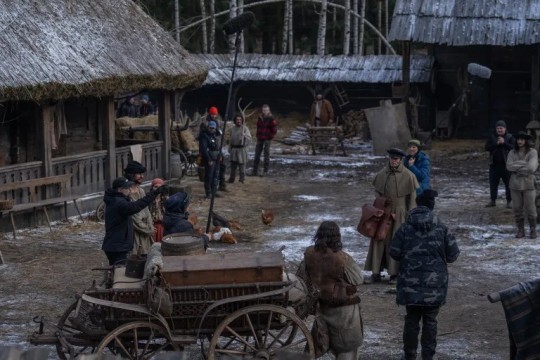
CREDIT: AIDAN MONAGHAN/FOCUS FEATURES LLC
The location scouting was vast, but fruitless
Eggers: We scouted [cities like] Lubeck and Wismar and Gdansk (which was in Germany in that period). They had the architecture, but none of them had a massive amount of streets left intact because of World War Two. Even if we wanted to, there wasn’t a city that would have served our purpose.
And so they built the film at Prague’s Barrandov Studios
Eggers: Bernie [Bellow], our line producer, and his team were able to facilitate building all of these things, because I get the architectural specificity that I’m looking for.
Craig Lathrop (Production Designer): [Eggers’] beautiful and horrifying script was full of design opportunities, and all of the roughly 60 sets seemed to have something that was oddly tricky and specific. The streets of Wisborg were by far the largest sets we built. I wanted each building to have its own personality. None of the sets are perfectly square or plumb, and on Wisborg’s Old Town Street, the medieval houses have a certain amount of sag. We graded all the streets so the characters would move up or down the streets with the exception of the exterior of the Harding’s house (it is on a canal, so that street is flat). By controlling the palate and the dressing, we tried to ensure that when you see the streets in the early scenes, it’s a bustling port town. Once the plague arrives, those same streets would feel ominous and frightening.
Eggers: Sometimes the sets were literally coming apart on hinges midway through a take and coming back together again.
Lathrop: [Like in] the opening shot. Ellen is sitting up in her bed, calling to an unknown spirit. When she gets out of bed and moves toward the window, the wall with the bed alcove split open and swung out of the way with all of the set dressing attached, in a choreographed dance with the camera so that we could end the shot looking 180 degrees in the opposite direction, with a head-to-toe profile of Ellen and Orlok’s shadow.
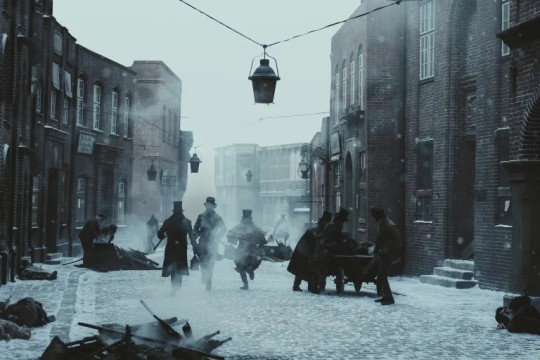
Though it did venture into the outside world sometimes
Eggers: I think Bram Stoker might have seen an engraving of Hunedoara Castle when it was in disrepair, and that it [might have been] his template for Castle Dracula, so we shot that castle for [Count Orlok’s castle’s] exterior. In the cemetery scenes, we had to find a part of the cemetery that was large enough to accommodate building a large mausoleum. There also weren’t a lot of headstones around. We had to bring in 30 headstones to populate it.
Eggers designed a new kind of Orlok…
Eggers: I knew he would be a folk vampire, instead of a monster like the Murnau film, or an Anglo-literary vampire like every other Dracula.
… that dressed like a Transylvanian nobleman
Eggers: There’s never been a version of Dracula or Nosferatu dressed like a Transylvanian nobleman with authentic Hungarian attire from the 16th century.
Muir: Textiles for Orlok had to evoke a past some 250-300 years before the period in which we find all of the other characters, so I looked at paintings, illustrations, garments housed in museum collections, and books illustrating the Transylvanian military from around 1560 to the mid-1600s. I tried to find as many examples as possible of what a dolman (tunic) or mente (overcoat) or kolpak (hat) or footwear could look like within this period, along with sash, buttons, and embellishments suitable to the clothing of a nobleman of great wealth and privilege. Once completed, Orlok’s costuming had to then be distressed (corpsified) inside and out, [because his] centuries of rotting flesh affect the inferior layers and the environment affects the exterior.
Bill Skarsgård found a nightmare-inducing voice
Eggers: Bill worked with an opera coach to lower his voice an octave. We didn’t do a lot of ADR [automated dialogue replacement] for him. Sometimes we pushed his voice into the subs to give it even more body, but it’s not EQ manipulated to make it deeper or crazier than it was. That was him.
Eggers wanted to “embrace the romanticism” of the story
Robin Carolan (Composer): It’s almost like a love triangle to some degree. So I think when it came to the score, I wanted to write it as if it was this sort of fucked up marriage.
Blaschke: I was just trying to make [the cinematography] as shapely and lush as possible, and to embrace that. The current [movie] trend is kind of grungy and handheld, [shot] with available light. I wanted to buck against that and rebel with craft. When [Eggers] says he wants it to look romantic and lush, then that just lets me fall into that instinct.
Blaschke shot on film
Blaschke: I just prefer the palette of it to digital. That has nothing to do with trying to show off… the palette is lovely and befits this film. Digitally the colours would be very clean; [on film,] they’re just much more complex.
Eggers only wanted to shoot in gloomy weather…
Eggers: [It was] one of the only things that really frustrated the studio. They understood, but time is money, and when you’re waiting around for cloud coverage, when you have 200 extras, it becomes quite scary.
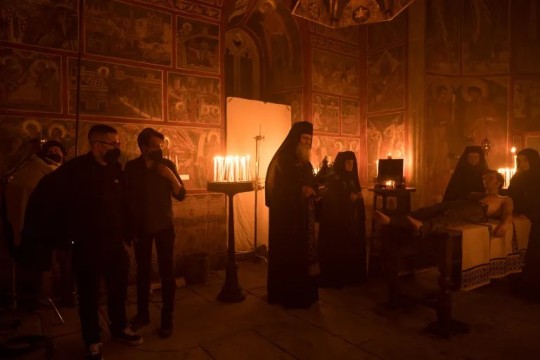
… but he wasn’t the only stickler for lighting.
Eggers: The most time consuming lighting setups were moonlit interiors, because Jarin only wanted the light source to be coming from the windows. He also wanted the light source to feel very far away for the most amount of naturalism.
Blaschke: [Typically,] in moonlit interiors in real life, you don’t see jack squat. Sometimes, when shooting those scenes, I had a light for moonlight 70 meters away, shooting over the entire soundstage into a mirror that then sends it back into the set. We had a lot of uncontrolled light everywhere, so we had to close it off. It gets very time consuming.
The Nosferatu typefaces were discussed and debated
Eggers: The Nosferatu title treatment is a kind of strange looking Gothic typeface that I worked very closely on with Teddy Blanks, the title designer. He did many iterations of it, down to changing the serifs ever so slightly to really get what we were after. [And] even though it’s a German speaking movie, we went with a typeface for the subtitles that would have been in an English speaking book from 1838. I think we used whatever type was used for Oliver Twist.
The film had an occult consultant
Eggers: I had an occultist come in and check out all of the books and the paperwork. The only thing that we fucked up – and we fixed it – was the heptagram that Knock sits in [at the beginning of the film].
And a guy who knew everything about Romanian folklore
Eggers: Florin Lazarescu is most famous in western cinema for writing the screenplay for Aferim!, but he’s a novelist and a poet, and also an expert on Romanian folklore.
Florin Lazarescu (Consultant and Researcher): I acted as a consultant and researcher on anything related to 19th-century Transylvania. I also contributed some Romanian and Romani dialogue and worked on creating the ancient Dacian language that Count Orlok speaks. Sometimes I found myself in unique situations, such as giving the final approval on wooden crosses or ecclesiastical garments inscribed with texts I proposed.
The sound design was cranked up to a million
Eggers: People like to say that even though I’m making movies that take place in the past, the filmmaking is very modern. But I think the filmmaking is not very modern at all – it’s the sound that makes it more modern and visceral. Even if there are scenes with a lot of silence, the wind tones and the creaky doors are very like dialled in.
While the score was loosely inspired by Sky Ferreira
Carolan: Rob and I will kind of have our own references, and some of them can be quite odd. There’s a Sky Ferreira song called “Downhill Lullaby”. I was listening to that kind of obsessively for certain scenes for Ellen’s character. It just put me in a certain mood.
The costumes are hyper-specific
Eggers: [For Ellen] I found a locket from the period that had that heart shape, like something you’d get at a store for a teenage girl.
Muir: A small section of the centre back of Hutter’s waistcoat collar is made of the same fabric as the waistcoat back. It would not be seen as the frock coat always remained on (walking around in shirtsleeves was not really done during the film’s period – unless you are running around a terrifying castle attempting escape). It’s a wee detail that speaks to Hutter’s lack of funds.

Deep thought went into its possessions and exorcisms too
Eggers: [French neurologist Jean-Martin] Charcot made etchings of every hysterical pose that his patients did. Those were a bit of a menu for us to go through. When you read the script, [Lily’ character Ellen is] doing this thing. Now she’s doing this thing. Now it’s really crazy. Now it’s really, really crazy! [Movement director Marie-Gabrielle Rotie, Depp and I had to ask ourselves:] how do we actually do that? When is it sinister? When is it sensual? When is it childlike? When is it demonic? The more The Exorcist-like stuff is not, for me, the most powerful. I think that the [demonic sex] scene with her and Nick, even though it’s in some ways less flashy, is more unique and disturbing.
Lazarescu: My favourite detail in the film involved an abbess from Bukovina performing an exorcism in Church Slavonic. Initially, it was more of a cinematic cliché, with no real connection to the Orthodox Christian tradition. I researched books, consulted specialists, and convinced Robert that a cliché exorcism would come across as cringeworthy. We replaced the ritual entirely with something plausible: a priest reciting from The Prayers of Saint Basil the Great in Romanian at the bedside of the ‘possessed’.
Oh, and the rats.
Eggers: [For the chapel scene in the film’s climax], we made Vacuform rat mats; these squares of plastic rats that were covered with fake fur that we tiled the floors with. [Then we added] a layer of CG rats on top of that. But there were 2000 real rats. I said 5000 by mistake in another interview. Now it’s gone viral.
#robert eggers#jarin blaschke#nosferatu#nosferatu 2024#linda muir#craig lathrop#florin lazarescu#film#behind the scenes#vampires#occult#supernatural#gothic horror
14 notes
·
View notes
Text



Werner Herzog mentre libera 11.000 topi nelle strade di Schiedam durante le riprese di "Nosferatu il vampiro" (1979).
#on the set#behind the scenes#werner herzog#nosferatu: phantom der nacht#nosferatu: a symphony of horror
55 notes
·
View notes
Text


246 notes
·
View notes
Text

I'm shaking crying throwing up WHAT A BEAUTIFUL FACE WE HAVE BEEN BLESSED BY THE GODS OF ANCIENT DACIA
Count Orlok I mean undead Vlad the Impaler what do I have to do in order for you to haunt me? 😭
#nosferatu#count orlok#nosferatu spoilers#nosferatu 2024#behind the scenes#nosferatu extras#nosferatu extended cut#HOW DO I GET THE EXTENDED CUT IN THE EU#IT'S ALWAYS USA FIRST#I'M FROTHING HERE HELLO#please gods#bill skarsgard#i almost cannot see bill here#immaculate#beauty#vampires#i'm deceased
15 notes
·
View notes
Text

Nicholas Hoult and Robert Eggers - behind the scenes of Nosferatu (2024)
72 notes
·
View notes